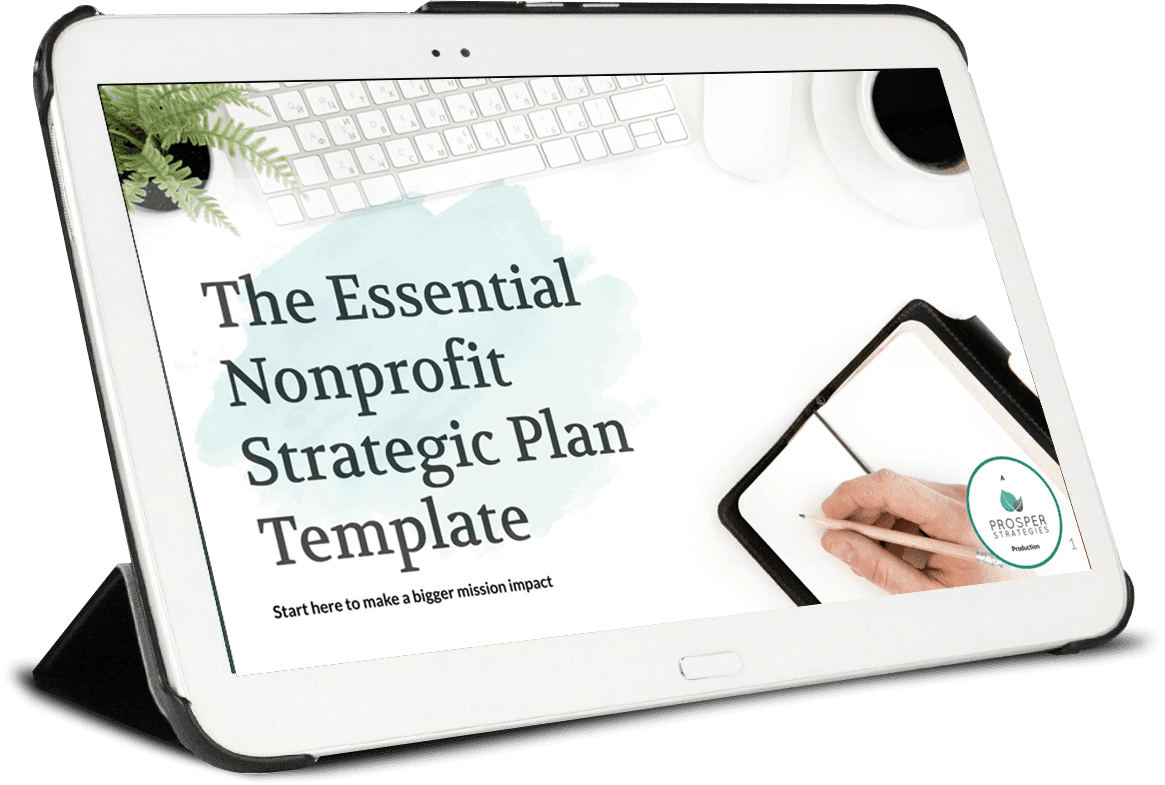Here at Prosper Strategies, one of our core beliefs is that a nonprofit’s strategy should be co-created with its stakeholders, especially the people and communities the organization exists to serve. But putting that belief into practice presents a variety of challenges. One of the biggest is that it can encourage the tendency that already exists at many nonprofits to operate with a “consensus culture,” where decisions don’t get made unless everyone is in complete alignment.
So how can your nonprofit effectively engage its stakeholders in shaping its strategic plan (and program, marcomm, fundraising and other strategies) without falling into the consensus culture trap?
Here are a few ideas.
Make sure you have a solid understanding of who your stakeholders are
Who comes to mind when you’re asked to list your nonprofit’s stakeholders? Hopefully, those who use your programs and services are the first group you think of. They’re the reason your nonprofit exists and the people you should be held most accountable to. Their needs, preferences and priorities should take center stage. Your donors and funders also likely come to mind, because, well, keeping the lights on is important. But do you also think of your staff, board of directors, volunteers, other similar or nearby organizations, corporate and community partners, government agencies, elected officials, the families of the people/communities you serve, and others? Most organizations have a long list of stakeholders like these, and they all should be involved in shaping your organization’s strategy in some way. But before you can figure out how to tap into these groups, you need to have a good understanding of who they include and how they interact with one another. If you’re unclear here, it may make sense for your organization to go through a formal stakeholder mapping process.
[bctt tweet=”Who comes to mind when you’re asked to list your nonprofit’s stakeholders? Hopefully, those who use your programs and services are the first group you think of.” username=”ProsperStrat”]Involve the right stakeholders in the right ways
Every stakeholder group is not created equal. Different groups expect and deserve to be involved in the process of co-creating your organization’s strategy in different ways. For example, it’s totally appropriate to ask staff members on your leadership team (who are compensated and committed to working 40+ hours a week) to attend weekly strategic planning sessions. However, asking someone from the community who uses your programs and services to do the same would be a major overstep, especially if you’re expecting them to volunteer their time.
Here are a variety of ways to consider engaging your stakeholders, ranging from a lighter to a heavier lift. As you get toward the heavier lift end of the spectrum, you should absolutely consider compensating those you’re asking to contribute to strategy development for their time.
Lighter Lift
- Participate in one-off research such as:
- A focus group
- An interview
- A survey
- Participate in a listening session to react to a specific idea, approach or strategy
Medium Lift
- React to an existing strategy or plan in writing
- Participate in a stakeholder advisory committee for a specific project with a limited timeframe
Heavier Lift
- Sit on a stakeholder advisory board and provide input on a variety of projects over the course of a year or more
- Serve as a conduit between your organization and others in their stakeholder group, soliciting additional feedback from them and sharing it with you
Use the FINAL decision-making process to give decision-making power to whomever is closest to the issue at hand
Once your organization is consistently involving its wide range of stakeholders in the process of shaping its strategy, you may start to see the tendency to encourage a “consensus culture” deepen. Making sure everyone is on the same page around important strategic decisions can often feel like the “right thing” to do, especially as you begin to involve those who aren’t on your staff in strategy co-creation. But it can actually be really counterproductive. The more stakeholders you begin to involve, the more difficult establishing alignment can become, and you can end up in a never-ending feedback loop, with a strategy that is perpetually in “draft.” When this goes on for so long that important initiatives stall, it can be extremely harmful to your mission.
Instead of working to establish consensus, I’m a big fan of implementing the Advice Process, re-named the FINAL Decision Making Process by Vu Le. Vu explains the process in far greater detail in his post, but essentially it comes down to this:
Rather than working to establish consensus from the top down, an organization commits to letting whomever is closest to an issue at hand make a decision. This could be your executive director, but it could also just as likely be someone on your program team, a community member, someone who uses your programs and services, or groups of those individuals. Ceding decision-making power to those closest to important decisions that must be made as you shape your strategy is the purest form of stakeholder engagement, and as an added bonus, it ensures that strategic decisions never stall due to lack of consensus.
How are you engaging your stakeholders in shaping your organization’s strategy? And what are you struggling with in the process? We’d love to hear about it in the comments.
Is Your Nonprofit Doing All it Can to Advance its Mission?
A strategic plan is the cornerstone of your nonprofit’s success.

Going through the process of outlining your organization’s most important priorities and documenting them in a well thought out strategic plan is the first step in answering this question.
